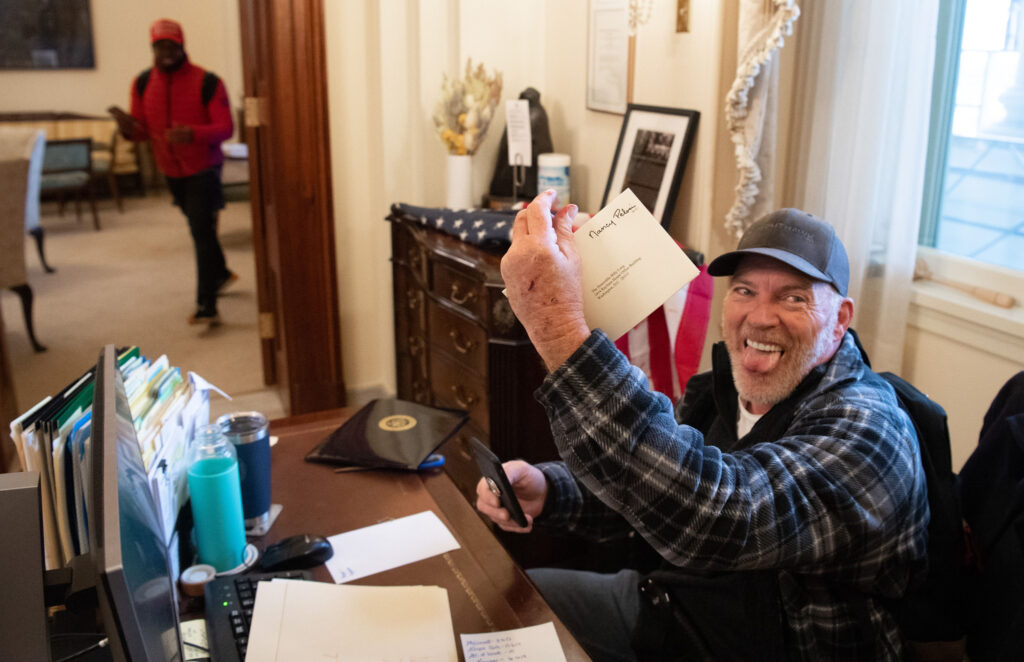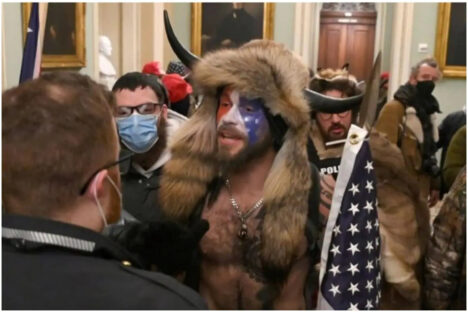January 6, during a joint meeting between the Senate and the House of Representatives of the United States to certify the results of the presidential election, supporters of then President Trump violently stormed the Capitol Building, killing five people in the riots.
By the end of January, U.S. federal prosecutors had filed criminal charges against more than 170 people.
According to the New York Times on February 4, although less than a quarter of the total number of people facing charges are currently involved in the riots, it is enough to outline the group portraits of these people and the progress of the related investigation.
Who was the one who hit Congress?
According to court documents and other records, at least 21 of those currently on criminal charges have links to radical groups or militia groups, at least 22 have stated that they are active duty or veterans, and at least a dozen explicitly support the conspiracy theory of Anonymous
Q. The New York Times said that most people showed little organizational principles, just simply and fanatically believed that “Trump won the 2020 election”.
These people come from 39 states, including Hawaii far away from the mainland of the United States. At least three are state or local officials, and three others are police officers.
They are both business owners and unemployed, as well as conservative celebrities on social media platforms. Many people have made statements about violence, others say that their protests are basically peaceful.
The analysis of the report believes that the results of sorting out these cases show that many people may be unorganized, but some groups and individuals have trained and prepared for the conflict before the riots on January 6.
The U.S. Department of Justice has promised that even those guilty of minor crimes of trespassing into Congress will be prosecuted and resources will be invested to deal with more serious crimes such as conspiracy and intentional homicide.
Is there any organization of the riots?
According to court records and other records, including videos of group activities, more than 10% of the current accused have expressed loyalty or tendencies to radical groups.
Some of them are leaders of these groups, while others wear the equipment of their groups or have discussed with members of the group plans to participate in the January 6 protests.
Among those accused of conspiracy in the parliamentary riots, there are four members of the far-right organization Proud Boys.
Another seven people charged with other charges may have links with the group, including Joseph Biggs, one of the leaders of the “Pride Boy”.
Five of the accused were related to the militia Oath Keepers, and three of them were charged with conspiracy.
In the video recording, there are also people who wear the organization’s badges walking with these people, but they have not been charged for the time being.
In addition, members of groups such as the militia group Three Percenters and the white supremacist organization Patriot Front participated in the riots on January 6.
The New York Times believes that although organized groups may have played an important role in the impact on Congress, the majority of identity currently identified is more loosely united.
Cynthia Miller-Idriss, director of the Polarization and Extremism Research and Innovation Laboratory of American University, said that this partly reflects the progress of the prosecution of conspiracy cases.
The reason for slowness, on the other hand, also coincides with the radicalization trend of far-right ideas in recent years.
“Most people seem to be individuals rather than full members of a particular group.
There is no identity between them except an all-encompassing set of ideology and disinformation.” Miller-Idris said.
What are the charges of the rioters?
According to the statistics of The New York Times, as of January 31, local time, 107 people were charged with trespassing and interference with Congress only; 43 people were charged with obstruction of law enforcement, weapons crimes, intimidation or property crimes, most of whom also have the first charge; 26 people were also charged in addition to the above two categories of crimes.
He committed the crime of conspiracy and assault.
At present, the vast majority of charges are against misdemeanors such as trespassing and disturbing Congress.
Acting federal prosecutor Michael Sherwin of the District of Columbia said that he “wished to find the easiest case to prove” and filed criminal charges in a short time.
Authorities have arrested people who uploaded videos of their suspected crimes online, as well as several “iconical” figures in the riots: the man who carried the Confederate flag through the Capitol, the man who crossed the desk of House Speaker Pelosi and took her letter, and the man who participated in the A man with naked top and horns in the House of Representatives.
At the same time, allegations in more complex cases are also gradually unfolding.

More than 40 people face more serious charges, such as obstruction of law enforcement, weapons crimes and theft of government property.
This includes people arrested outside the Capitol for possessing weapons such as firearms and Molotov cocktails, as well as intimidating their families and members of Congress.
One of the men was charged with federal and local crimes for intimidation and murder of Pelosi and violation of Washington, D.C. regulations. Federal agents said that a Glock pistol, a Tavor X95 assault rifle and a large amount of ammunition were found in the man’s trailer.
More than 20 people also face the most serious charges, namely, assaulting the police and conspiring with others to attack Congress.
Among these men was a Marine veteran who took a hockey stick to the protest and was accused of attacking a policeman with a bat on the steps of the Capitol. There are also videos showing a man from Connecticut putting a bloody policeman on the door with a riot shield.
U.S. Department of Justice officials said that the number of people accused will increase geometrically in the next period.



